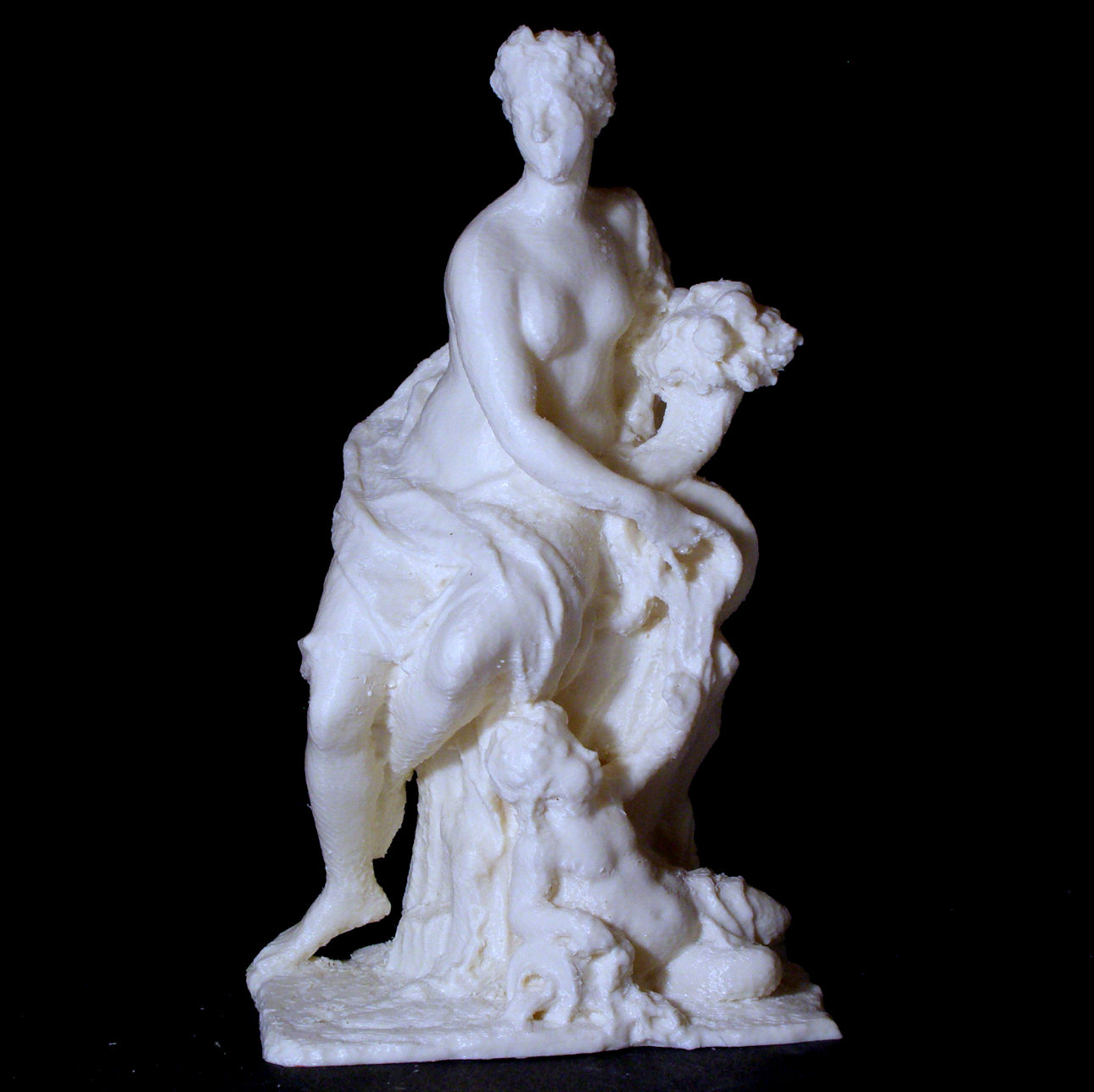
Amphitrite and Neptune
myminifactory
The goddess of the sea, Amphitrite, was commissioned by Jules Hardouin-Mansart in 1698 to be a companion piece for the statue of Neptune at the foot of the waterfall in the Parc de Marly. The plaster model was placed in 1699 and the marble version executed in 1705. In 1796, Amphitrite and Neptune were taken from the Parc de Marly and used to decorate a fountain in Brest in 1801. Amphitrite and Neptune are two of four groups commissioned by Hardouin-Mansart from Antoine Coysevox for the large waterfall in the Parc de Marly. They were made along with the Seine and the Marne (Louvre) in 1698. Coysevox created the plaster models in 1699, but waited until he finished another royal commission before carving the marbles, which were completed in 1705. During the Revolution, Amphitrite and Neptune were seized and sent to Brest in 1801, where they were placed in different locations. Amphitrite was used to decorate a fountain while Neptune was placed in the Cours Dajot. They were sheltered in the Château de Kerjean from 1940 to 1953, then in the Château de Champs-sur-Marne before being brought to the Louvre in 1966. Amphitrite and Neptune were originally placed at the foot of the waterfall, near the pond, while the Seine and the Marne were placed at the top. They formed a symbolic representation of France's territory, with the waters of the rivers flowing towards the sea, which was the domain of the sea gods. As Amphitrite and Neptune were placed at a lower level, they were made smaller to compensate for optical effects. The statues are companion pieces, with symmetrical poses and faces seen in profile facing each other. Amphitrite's left arm is raised to catch her veil, balancing Neptune's right arm brandishing a trident. Their characters contrast two aspects of the sea: unleashed or calm. Neptune represents power and movement, while Amphitrite embodies peaceful grace. The sea god is dynamic and angry, struggling to master a rebellious sea horse with his trident. His whole body is mobile: his legs are braced, chest twisting, hair and beard flying. The swirling drapery matches his movement. His noble head expresses divine authority. The horse kicks against him, its mane bristling and head flung back, with flaring nostrils and gaping mouth. Amphitrite sits calmly on a placid sea monster, her mantle draped nobly over her legs in large folds. A gentle wind stirs her veil behind her, as Triton plays joyfully beside her, blowing a horn of plenty full of the riches of the sea.
With this file you will be able to print Amphitrite and Neptune with your 3D printer. Click on the button and save the file on your computer to work, edit or customize your design. You can also find more 3D designs for printers on Amphitrite and Neptune.
